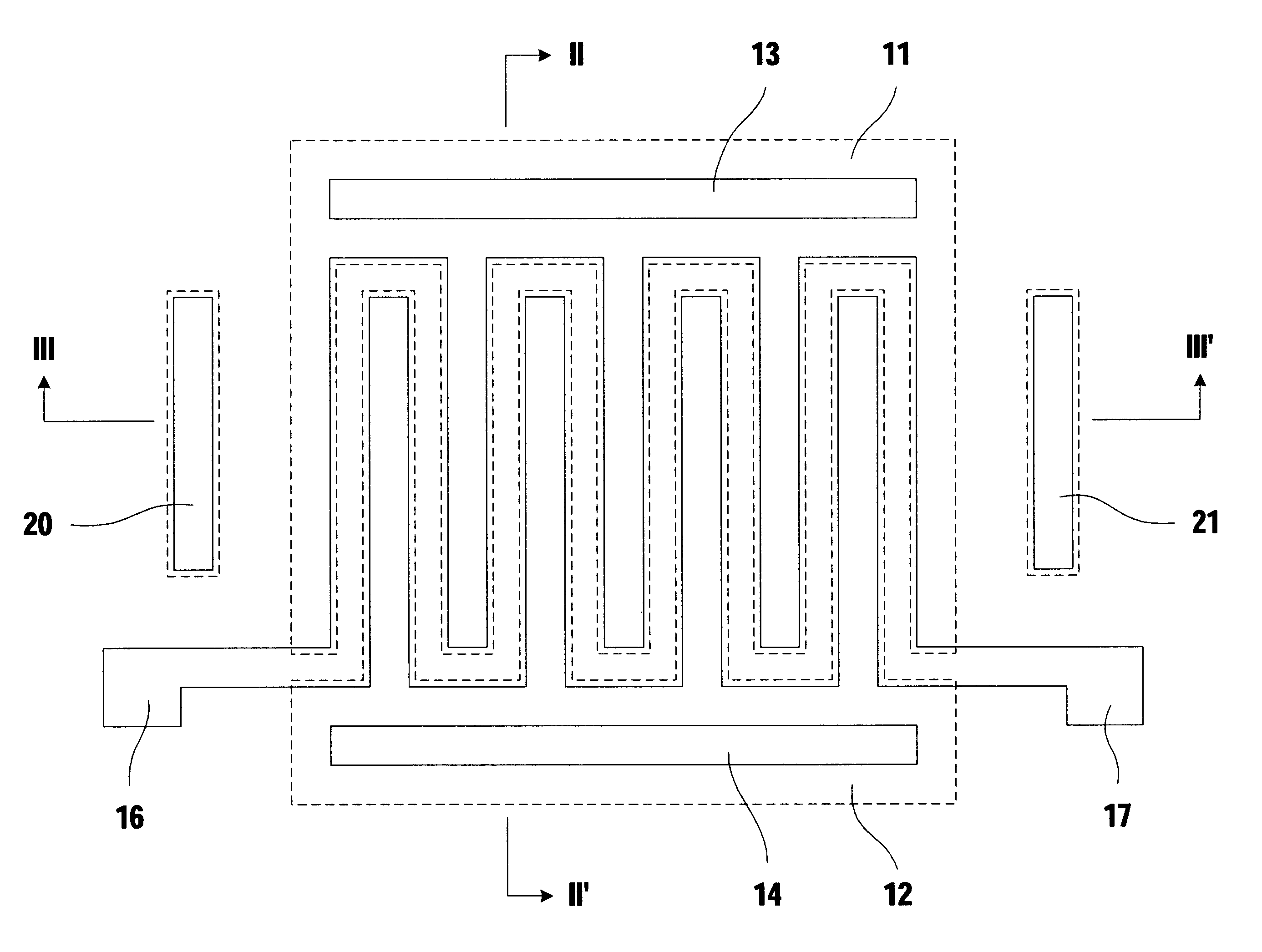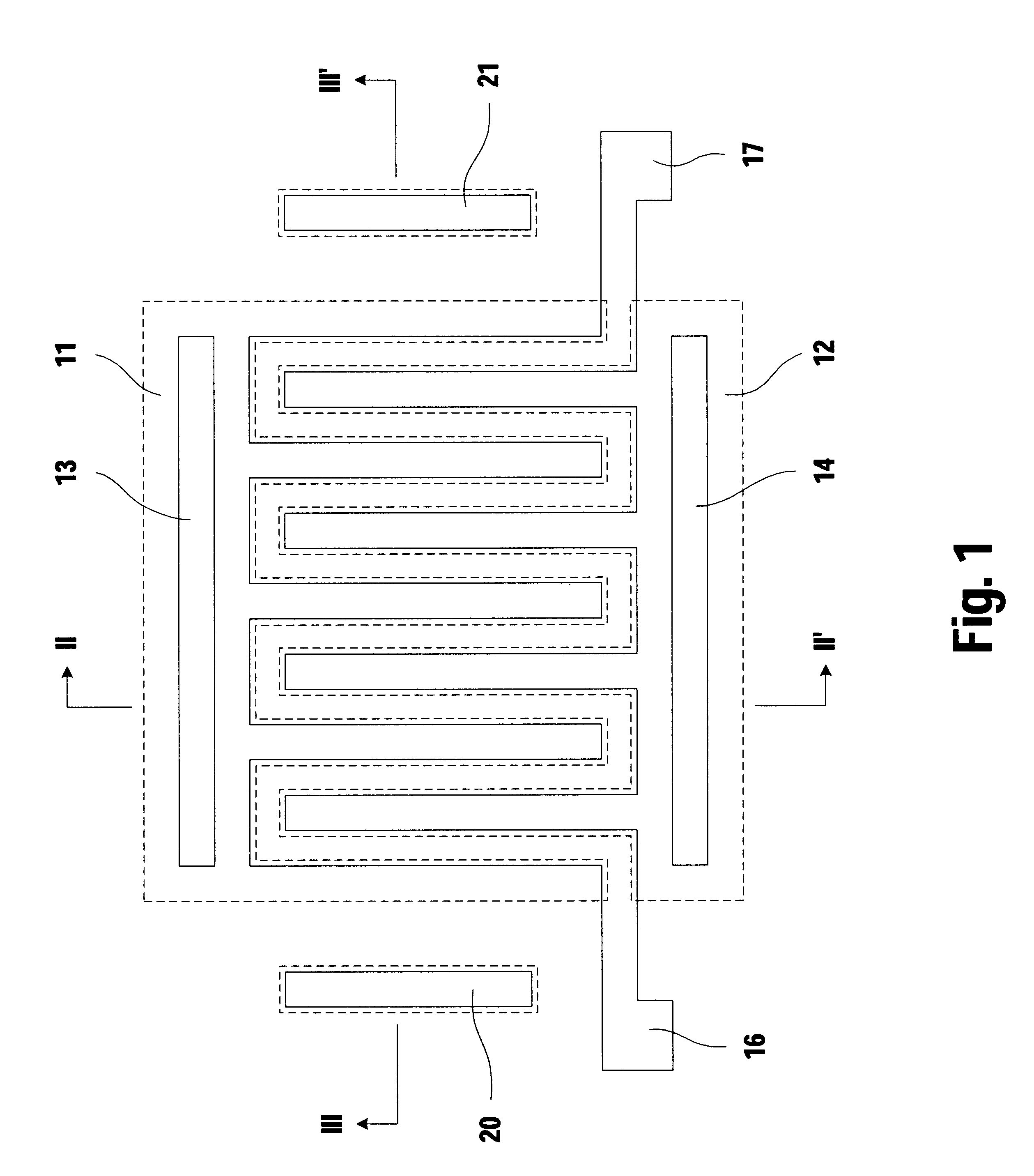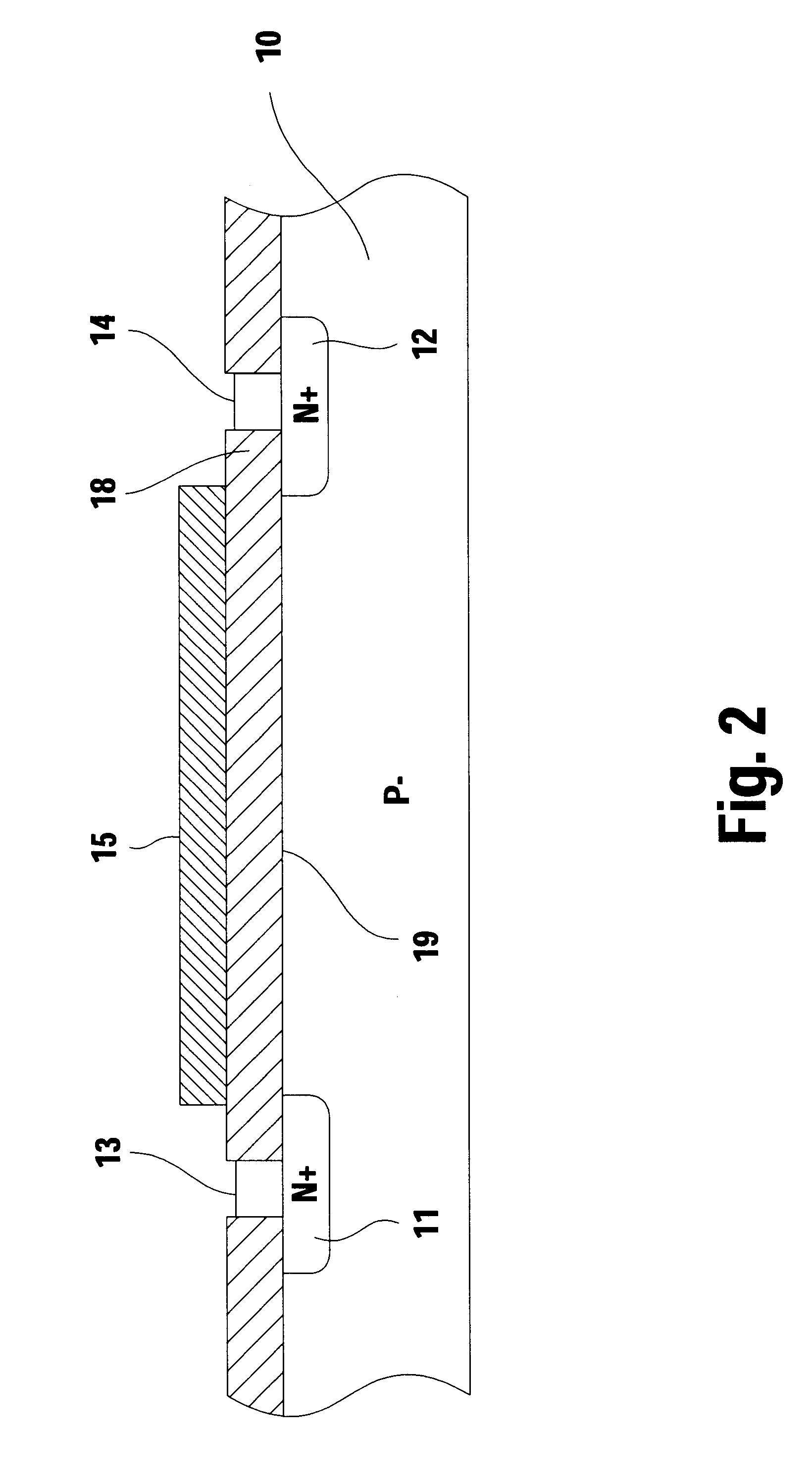Mobile ionic contamination detection in manufacture of semiconductor devices
a technology of semiconductor devices and ionic contamination, which is applied in the direction of measurement devices, electronic circuit testing, instruments, etc., can solve the problems of limiting the sensitivity of the test structure, ionic contamination, and the inability to efficiently perform life tests at the time of manufactur
- Summary
- Abstract
- Description
- Claims
- Application Information
AI Technical Summary
Benefits of technology
Problems solved by technology
Method used
Image
Examples
Embodiment Construction
Referring to FIGS. 1, 2, and 3, semiconductor device is shown in plan and section views to illustrate features of the invention. A silicon chip 10 has a test transistor formed therein by N+ source and drain regions 11 and 12, creating a thick-oxide MOS transistor. Metal contacts 13 and 14 provide source and drain connections for testing. The substrate is predominately P- type in this illustrative embodiment. A gate is created by an elongated serpentine metal strip 15 extending between source and drain, with metal pads 16 and 17 at the ends of the strip for applying voltages and currents thereto during the test. Thick field oxide 18 separates the gate 15 from a channel 19 between source 11 and drain 12. The field oxide 18 is many times thicker than gate oxide used for the logic or memory transistors on the chip, and is the same oxide used in peripheral areas of the chip to isolate functional devices from one another. Contact to the substrate region of the chip 10 is made at contact p...
PUM
 Login to View More
Login to View More Abstract
Description
Claims
Application Information
 Login to View More
Login to View More - R&D
- Intellectual Property
- Life Sciences
- Materials
- Tech Scout
- Unparalleled Data Quality
- Higher Quality Content
- 60% Fewer Hallucinations
Browse by: Latest US Patents, China's latest patents, Technical Efficacy Thesaurus, Application Domain, Technology Topic, Popular Technical Reports.
© 2025 PatSnap. All rights reserved.Legal|Privacy policy|Modern Slavery Act Transparency Statement|Sitemap|About US| Contact US: help@patsnap.com



